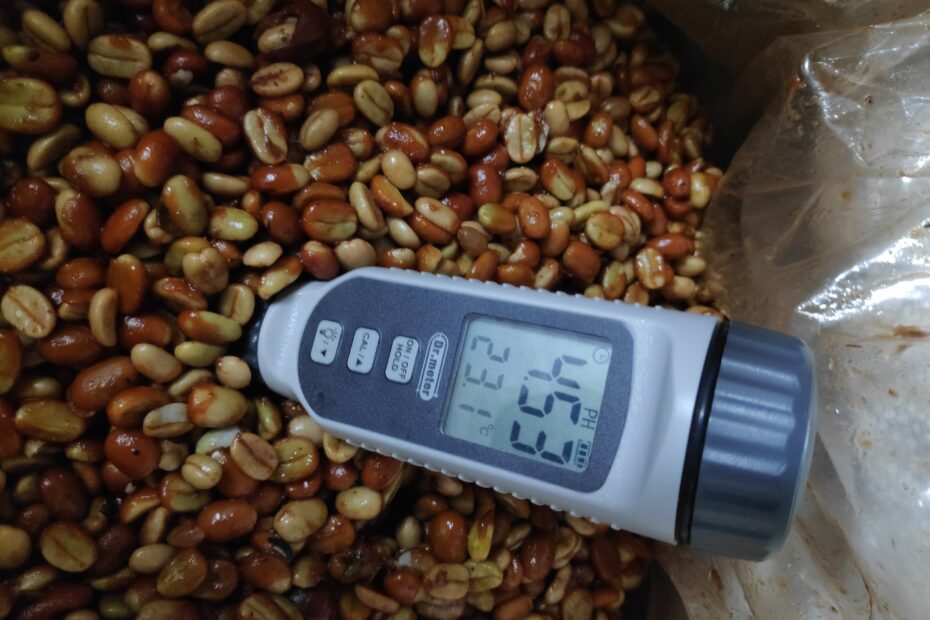As those in the specialty coffee industry look for new ways to compete, producers will increasingly be expected to produce new exotic varieties and introduce experimental processing methods. This demand, however, poses a massive challenge for many of the world’s coffee farmers.
Unlike other commodities that acquire value through processing, specialty coffee is already a differentiated product when it is still green. While a radical example, you just have to look at the Best of Panama auction in 2021 where a fermented Gesha received a record bid of $2,560 per pound.
Such results, however, are not luck of the draw but the result of diligent care and effort. “It takes up to five years for young coffee seedlings to produce commercially viable volumes of coffee, and they must be nurtured during those years,” says Matti Foncha, president of African Coffee Trading Group.
He explains that when a farmer grows specialty coffee, the trees require high maintenance and protection from pests and diseases over a nine-month cycle. Harvesting, post-harvest handling, and processing also require a higher level of effort to ensure quality is translated in the cup.
This painstaking process means more labourers, more hours, more inputs, more tools and more complex infrastructure.
Crucially, this process also requires a significant upfront investment that will only see a return after a five-to-ten-year period. And as with all investments, a return is never guaranteed – especially with a market as volatile as coffee.
And in a sector that continues to drive innovation, a niche market can scale into the mainstream. As Dr Janine Grabs said in her talk at 2019’s Re:co Symposium, “The quest for differentiation leads us to be all alike.” When this happens, a rare product can lose its edge, as well as its market value.
Yet, as consumers become more knowledgeable and discerning, the drive for increasingly exotic coffee varieties and experimental processing methods continues. While in the early stages of specialty coffee, consumers may have been satisfied with a coffee scoring between 80 and 82, the expectations today are much higher.
This leaves coffee producers catering to ever-demanding buyer requirements on quality and innovation, which in turn puts pressure on production costs.
And as the market for specialty coffee continues to ebb and flow, there is no guarantee that the prices a farmer receives will cover their costs of production. Therefore, investing in experimental processing methods and exotic varieties carries huge risks for coffee farmers.

Why rich coffee producers are better positioned
This leaves farmers with better access to capital in a better position to take advantage of the higher prices that are paid for specialty coffee.
“The biggest risk coffee growers face is the price uncertainty over that long period of time,” says Alejandro Cadena, co-founder and CEO of Caravela Coffee. “Especially if you’re making exceptional investments to satisfy a niche market like specialty.”
Matti highlights that few roasters are willing to commit to long-term contracts, which only exacerbates the existing risk for smallholders as they have no guarantee that they will be able to move their coffee when it comes to harvest.
“These are risks producers must take, and for the smallholder producer, there are no guarantees that eventual market prices will cover the expenses,” Alejandro says. “Richer farmers, independent of size, have a big advantage over smallholder farmers. They have enough capital amassed that they can take on higher risks.”
Most smallholders don’t have the funds to keep reinvesting in their farms to stay on top of market trends and so they often turn to the banks.
With little to no collateral that would allow them access to credit, many banks refuse to finance them. In some growing regions, higher interest rates are making it very difficult for smallholders to receive financing. As a result, pickers start to leave and crops end up being abandoned.
Not only does the investment required to access the specialty market come at a higher risk to smallholders, richer producers often have a more diversified portfolio, the ability to market their coffee, and better access to consuming markets.
“Their incomes rarely depend entirely on coffee, allowing them to invest in new processes or machinery, or buy more land,” Alejandro says. “They also tend to be better educated on market trends and to speak English, making buyer networking and market access more successful.”
“They’re able to attend industry events and directly relate with the consuming end of the value chain,” says Matti. “This also makes them more accessible to market visitors making so-called origin trips.”

How can we make specialty coffee production more accessible?
Specialty coffee is often pitched as a shining light to coffee producers worldwide – improve the quality of your product and be rewarded for it when it comes to harvest. However, it is clearly not as simple as that.
So how can specialty coffee become an attractive and sustainable option for all (or at least more) coffee producers?
Based on Caravela’s research on costs of production and living income in Latin America, Alejandro posits that scale and productivity of yields are the most important variables that need to be pushed to increase farmer prosperity.
Upscaling production, however, runs the risk of market saturation and eroding market-based premiums – which means price and profit uncertainty remain. Alejandro highlights that for the strategy to work, it requires action from the buyer side also.
“Giving farmers certainty over a long period of time means reducing their price and demand risks,” he says. “This is achieved by committing to purchase their coffee for three-five years at a pre-established price.”
This will allow them to save, invest and scale up, “creating a virtuous cycle that benefits the entire supply chain”.
Buyers can also help redress the balance by sourcing from a wider range of producer groups, including smallholders.
For Matti, finding strength in numbers will be key. Forming production groups, or what he calls “circles of excellence”, will allow producers to set standards, negotiate the cost of inputs, reduce labour costs, set market prices, and collaborate with value chain partners for fairer, direct sales.
Many farms, however, can be sustainable by maintaining a consistent bottom-line – selling predominantly lower-scoring coffee and keeping the risks and uncertainties of specialty coffee at bay.
Ultimately, it’s clear that the potential financial rewards for producing experimental coffees are much more accessible to richer producers. If we are serious about addressing this issue, that means giving a greater wealth of opportunities to everyone – including smallholders – so they can feel secure when they decide to invest in specialty coffee production.
Credits: https://intelligence.coffee/

